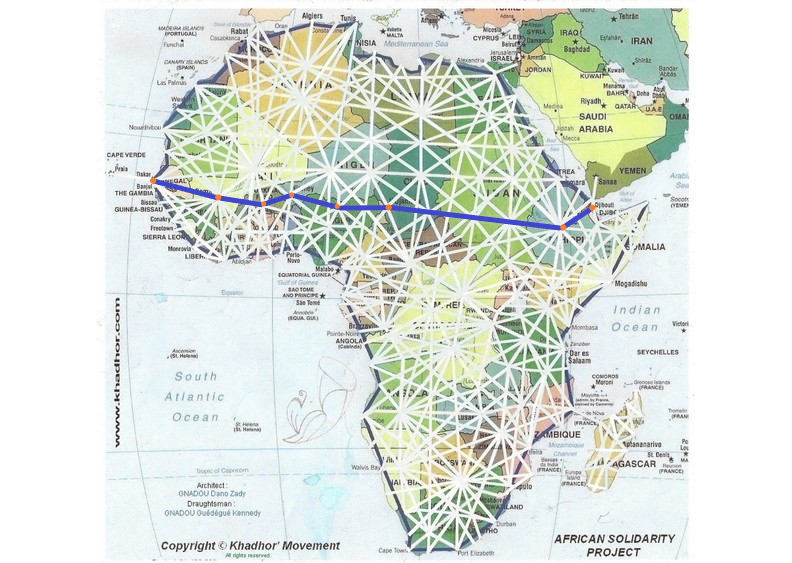
TRANSAFRIKHA Dakar – Djibouti via Addis Ababa
Written by GNADOU Athytheaud, Vice Chairman of TRANSAFRIKHA, in charg of Project Management and Business Development
Transafrikha Dakar – Djibouti via Addis Ababa is a freight and high-speed passenger rail infrastructure proposed, planned and designed by Transafrikha (French-registered environmental association), with a lengtht of 4200.11 mi (6759.42 km) and a total investment cost of €157.5 billion, connecting Dakar, SENEGAL (Far Western Africa & Atlantic Ocean) with Djibouti, DJIBOUTI (Far Eastern Africa & Indian Ocean).
Transafrikha Dakar – Djibouti has 12 stations, including 8 main stations (marked in bold type), and 4 additional stations:
- Dakar, SENEGAL (West Terminal)
- Tambacounda Region, SENEGAL
- Bamako, MALI
- Ouagadougou, BURKINA FASO (West Central Terminal)
- Niamey, NIGER
- Kano, NIGERIA
- N’Djamena, CHAD (Central Terminal)
- Salamat Region, CHAD
- East Darfur State, SUDAN
- Upper Nile State, SOUTH SUDAN (East Central Terminal)
- Addis Ababa, ETHIOPIA
- Djibouti, DJIBOUTI (East Terminal)
Transafrikha Dakar – Djibouti has 11 sections:
- Dakar, SEN – Tambacounda Region, SEN (324.75 mi/522.63 km)
- Tambacounda Region, SEN – Bamako, MLI (324.75 mi/522.63 km)
- Bamako, MLI – Ouagadougou, BFA (436.59 mi/ 702.63 km)
- Ouagadougou, BFA – Niamey, BFA (257.86 mi/ 414.98 km)
- Niamey, NER – Kano, NGA (444.21 mi/ 714.88 km)
- Kano, NGA – N’Djamena, TCD (441.13 mi/ 709,93 km)
- N’Djamena, TCD – Salamat Region, TCD (405. 83 mi / 653,13 km)
- Salamat Region, TCD – East Darfur State, SDN (405. 83 mi / 653,13 km)
- East Darfur State, SDN – Upper Nile State, SSD (405. 83 mi / 653,13 km)
- Upper Nile State, SSD – Addis Ababa, ETH (405. 83 mi / 653,13 km)
- Addis Ababa, ETH – Djibouti, DJI (347.50 mi/ 559.25 km)
Total lenght: 4200.11 mi / 6759, 42 km
Transafrikha Dakar – Djibouti has 2 divisions, inter-connected via N’Djamena, TCD (the Central Terminal):
- Dakar, SEN – N’Djamena, TCD (2229.29 mi/ 3587.67 km), or « West Dakar – Djibouti »
- N’Djamena, TCD – Djibouti, DJI (1970.83 mi/ 3171.75 km), or « East Dakar – Djibouti »
Each Transafrikha Dakar – Djibouti via Addis Ababa division is divided in subdivisions:
- Dakar, SEN – N’Djamena, TCD or » West Dakar – Djibouti » has 2 subdvisions, inter-connected via Ougadougou, BFA (the West Central Terminal):
- Dakar, SEN – Ouagadougou, BFA (1086.08 mi/ 1747.88 km) or « Far-West Dakar – Djibouti »
- Ouagadougou, BFA – N’Djamena, TCD (1143.19 mi/ 1839.79 km) or » Mid-West Dakar – Djibouti »
- N’Djamena, TCD – Djibouti, DJI or « East Dakar – Djibouti » has 2 subdivisions, inter-connected via Upper Nile State, SSD (the East Central Terminal):
- N’Djamena, TCD – Upper Nile State, SSD (1217.50 mi/ 1958.39 km) or « Mid-East Dakar – Djibouti »
- Upper Nile State, SSD – Djibouti, DJI (753.33 mi/ 1212.37 km) or « Far-East Dakar – Djibouti »
Unit costs per infrastructure of Transafrikha Dakar – Djibouti via Addis Ababa rail line
Base infrastructure cost
Considering that the base infrastructure cost of a conventional new line is of 4.4 M€/km, considering that the base infrastructure cost of a high-speed new line is of 8.4 M€/km, Considering that the base infrastructure cost of conventional signalling, telecommunication and electrification is of 0.4 M€/km, considering that the base infrastructure cost of high-speed signalling, telecommunication and electrification is of 0.5 M€/km, the total base infrastructure cost of a railway infrastructure is of 13.7 M€/km.
Here is the total base infrastructure cost (in euro) of each railway infrastructure (with signalling, telecommunication and electrification) of the Transafrikha Dakar – Djibouti Railway:
- Transafrikha Dakar – Djibouti: 92. 605, 150 billion
- Transafrikha WEST Dakar – Djibouti: 49. 151, 353 billion
- Transafrikha Far-West Dakar – Djibouti: 23. 946, 093 billion
- Transafrikha Dakar – Tambacounda: 7. 160, 031 billion
- Transafrikha Tambacounda – Bamako: 7. 160, 031 billion
- Total Transafrikha Dakar – Bamako: 14. 320, 062 billion
- Transafrikha Bamako – Ougadougou: 9. 626, 031 billion
- Transafrikha Mid-West Dakar – Djibouti: 25. 205, 123 billion
- Transafrikha Ougadougou – Niamey: 5. 685, 226 billion
- Transafrikha Niamey – Kano: 9. 793, 856 billion
- Transafrikha Kano – N’Djamena: 9. 726, 041 billion
- Transafrikha Far-West Dakar – Djibouti: 23. 946, 093 billion
- Transafrikha EAST Dakar – Djibouti: 43. 453, 797 billion
- Transafrikha Mid-East Dakar – Djibouti: 26. 843, 643 billion
- Transafrikha N’Djamena – Salamat: 8. 947, 881 billion
- Transafrikha Salamat – East Darfur: 8. 947, 881 billion
- Transafrikha East Darfur – Upper Nile: 8. 947, 881 billion
- Transafrikha Far-East Dakar – Djibouti: 16. 610, 154 billion
- Transafrikha Upper Nile – Addis Ababa: 8. 947, 881 billion
- Total Transafrikha N’Djamena – Addis Ababa: 35. 791, 524 billion
- Transafrikha Addis Ababa – Djibouti: 7. 662, 273 billion
- Transafrikha Upper Nile – Addis Ababa: 8. 947, 881 billion
- Transafrikha Mid-East Dakar – Djibouti: 26. 843, 643 billion
- Transafrikha WEST Dakar – Djibouti: 49. 151, 353 billion
Construction cost
Considering that the construction cost of a conventional new line is of 7.2 M€/km, considering that the construction cost of a high-speed new line is of 14.1 M€/km, Considering that the construction cost of conventional signalling, telecommunication and electrification is of 0.6 M€/km, considering that the construction cost of high-speed signalling, telecommunication and electrification is of 0.4 M€km, the construction cost of a railway infrastructure (with signalling, telecommunication and electrification) is of 22.3 M€/km.
Here is the total construction cost (in euro) of each railway infrastructure (with signalling, telecommunication and electrification) of the Transafrikha Dakar – Djibouti Railway:
- Transafrikha Dakar – Djibouti: 150. 736, 627 billion
- Transafrikha WEST Dakar – Djibouti: 80. 005, 264 billion
- Transafrikha Far-West Dakar – Djibouti: 38. 977, 947 billion
- Transafrikha Dakar – Tambacounda: 11. 654, 649 billion
- Transafrikha Tambacounda – Bamako: 11. 654, 649 billion
- Total Transafrikha Dakar – Bamako: 23. 309, 298 billion
- Transafrikha Bamako – Ougadougou: 15. 668, 649 billion
- Transafrikha Mid-West Dakar – Djibouti: 41. 027, 317 billion
- Transafrikha Ougadougou – Niamey: 9. 254, 054 billion
- Transafrikha Niamey – Kano: 15. 941, 824 billion
- Transafrikha Kano – N’Djamena: 15. 831, 439 billion
- Transafrikha Far-West Dakar – Djibouti: 38. 977, 947 billion
- Transafrikha EAST Dakar – Djibouti: 70. 731, 363 billion
- Transafrikha Mid-East Dakar – Djibouti: 43. 694, 397 billion
- Transafrikha N’Djamena – Salamat: 14. 564, 799 billion
- Transafrikha Salamat – East Darfur: 14. 564, 799 billion
- Transafrikha East Darfur – Upper Nile: 14. 564, 799 billion
- Transafrikha Far-East Dakar – Djibouti: 27. 036, 966 billion
- Transafrikha Upper Nile – Addis Ababa: 14. 564, 799 billion
- Total Transafrikha N’Djamena – Addis Ababa: 58. 259, 196 billion
- Transafrikha Addis Ababa – Djibouti: 12. 472, 167 billion
- Transafrikha Upper Nile – Addis Ababa: 14. 564, 799 billion
- Transafrikha Mid-East Dakar – Djibouti: 43. 694, 397 billion
- Transafrikha WEST Dakar – Djibouti: 80. 005, 264 billion
Total investment cost
Considering that the investment cost of a conventional new line is of 8.2 M€/km, while the investment costs of the other unit infrastructures (high-speed lines, conventional and high-speed signalling, electrification, telecommunication) are identical to their construction cost, the total investment cost of a railway infrastructure (with signalling, telecommunication and electrification) is of 23.3 M€/km.
Here is the total investment cost (in euro) of each railway infrastructure (with signalling, telecommunication and electrification) of Transafrikha Dkar – Djibouti Railway:
- Transafrikha Dakar – Djibouti: 157. 495, 185 billion
- Transafrikha WEST Dakar – Djibouti: 83. 592, 944 billion
- Transafrikha Far-West Dakar – Djibouti: 40. 725, 837 billion
- Transafrikha Dakar – Tambacounda: 12. 177, 279 billion
- Transafrikha Tambacounda – Bamako: 12. 177, 279 billion
- Total Transafrikha Dakar – Bamako: 23. 354, 558 billion
- Transafrikha Bamako – Ougadougou: 16. 371, 279 billion
- Transafrikha Mid-West Dakar – Djibouti: 42. 867, 107 billion
- Transafrikha Ougadougou – Niamey: 9. 669, 034 billion
- Transafrikha Niamey – Kano: 16. 656, 704 billion
- Transafrikha Kano – N’Djamena: 16. 541, 369 billion
- Transafrikha Far-West Dakar – Djibouti: 40. 725, 837 billion
- Transafrikha EAST Dakar – Djibouti: 73. 902, 241 billion
- Transafrikha Mid-East Dakar – Djibouti: 45. 653, 787 billion
- Transafrikha N’Djamena – Salamat: 15. 217, 929 billion
- Transafrikha Salamat – East Darfur: 15. 217, 929 billion
- Transafrikha East Darfur – Upper Nile: 15. 217, 929 billion
- Transafrikha Far-East Dakar – Djibouti: 28. 248, 454 billion
- Transafrikha Upper Nile – Addis Ababa: 15. 217, 929 billion
- Total Transafrikha N’Djamena – Addis Ababa: 60. 871, 716 billion
- Transafrikha Addis Ababa – Djibouti: 13. 030, 525 billion
- Transafrikha Upper Nile – Addis Ababa: 15. 217, 929 billion
- Transafrikha Mid-East Dakar – Djibouti: 45. 653, 787 billion
- Transafrikha WEST Dakar – Djibouti: 83. 592, 944 billion
To resume, Transafrikha Dakar – Djibouti, it is a transcontinental railway:
-With a lenght of 4 200 miles/6 760 km, with a total construction cost of €150.7 billion and a total investment cost of 157.5 billion,
-Linking the Atlantic Ocean to the Red Sea & the Indian Ocean via the Gulf of Aden ,
-Open to global investments and international constructors & business operators
-Crossing Africa from east to west, encompassing ten countries and four subregions (Western africa, Middle africa, Northern africa and Eastern africa) of a continent with a total population of 1. 369 billion people, a 30.4 million km2 (11.7 million square miles) surface, and a GDP per capita (PPP) of $6.84 trillion (2021 est; 4th).
Transafrikha Dakar – Djibouti via Addis Ababa is a long-conceived mega-project, created by Mr GNADOU Dano Zady (Chairman of HGOAH SAS and Transafrikha), forming a corridor which could opportunately reach African capitals, economic areas and seaports/airports through Transafrikha’s railway extensions.
Transafrikha, 2021
Sources:
- Assesment of unit costs (standard prices) of rail project (CAPital EXpenditure), Final report, Written by M. ATTINÀ, A. BASILICO, M.BOTTA, I. BRANCATELLO, F. GARGANI, V. GORI, F. Wilhelm, M. MENTING, R. ODOARDI, A. PIPERNO, M. RANIERI from PwC and supported by the contribution of Prof. M. COLI and Prof. F. ZAMBELLONI from COWI (13th July 2018)
- UN Data
- International Monetary Fund
Links:
- https://ec.europa.eu/regional_policy/sources/docgener/studies/pdf/assess_unit_cost_rail_en.pdf
- https://ec.europa.eu/regional_policy/sources/docgener/studies/pdf/assess_unit_cost_rail/annex_12_tool_user_guide.pdf
Glossary:
- Conventional line: Railway lines with a maximum speed of 249 km/h for new lines and 199 km/h for upgraded lines.
- High-Speed: New lines designed for speeds equal to or above 250 km/h and upgraded existing lines for speeds equal to or above 200 km/h
- New line: Project related to the deployment of a new railway line or to the deployment of additional tracks on an existing line
- Operation type: The operation type of the railway line (or section). The possible options are: freight, pax, mixed (pax/freight)
- Signalling, electrification, telecommunication: Projects related to the deployment of a signalling system, telecommunication and/or electrification system along a railway line.
The present financial estimate is established by using the REGIO Rail Unit Cost Tool developped by DG REGIO Rail (EU Commission).
« The aim of the REGIO Rail Unit Cost Tool is to aid the assessment of investment costs in rail infrastructure projects. Specifically, the Tool performs two activities a benchmarking analysis and forecasting. The former verifies whether the investment cost of a rail infrastructure project is comparable to the investment cost of similar projects. The latter supports the evaluation of infrastructure investments by providing cost estimation of the project and of each cost component. The projects used for the analysis are identified on the basis of the factors that impact the investment cost, thus the technical characteristics of the railway line (e.g. category of works, line category, structures included in the investment, etc.) and the external conditions of the project (e.g. geographical features of the construction site, presence of urban environment, etc.). »
- From « Assesment of unit costs (standard prices) of rail projects (CAPital EXpenditures), REGIO Rail Unit Cost Toll instructions, Introduction »; 13th July 2018

Copyright © TRANSAFRIKHA. All rights reserved.


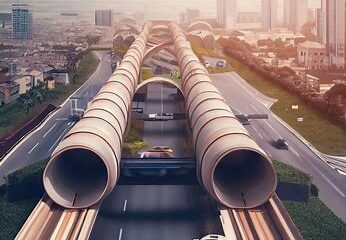

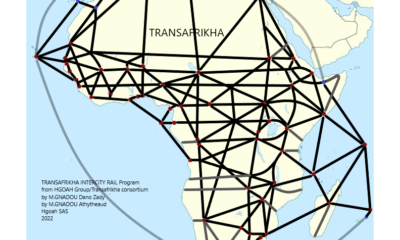
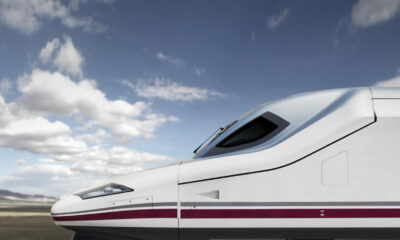
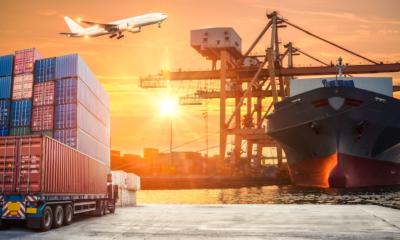
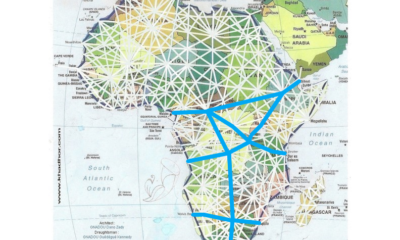
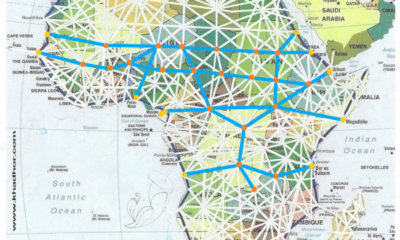
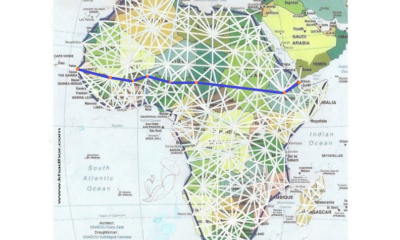
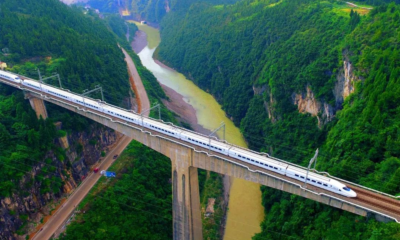
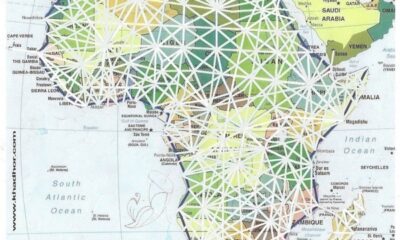





Facebook
Twitter
Pinterest
Google+
RSS